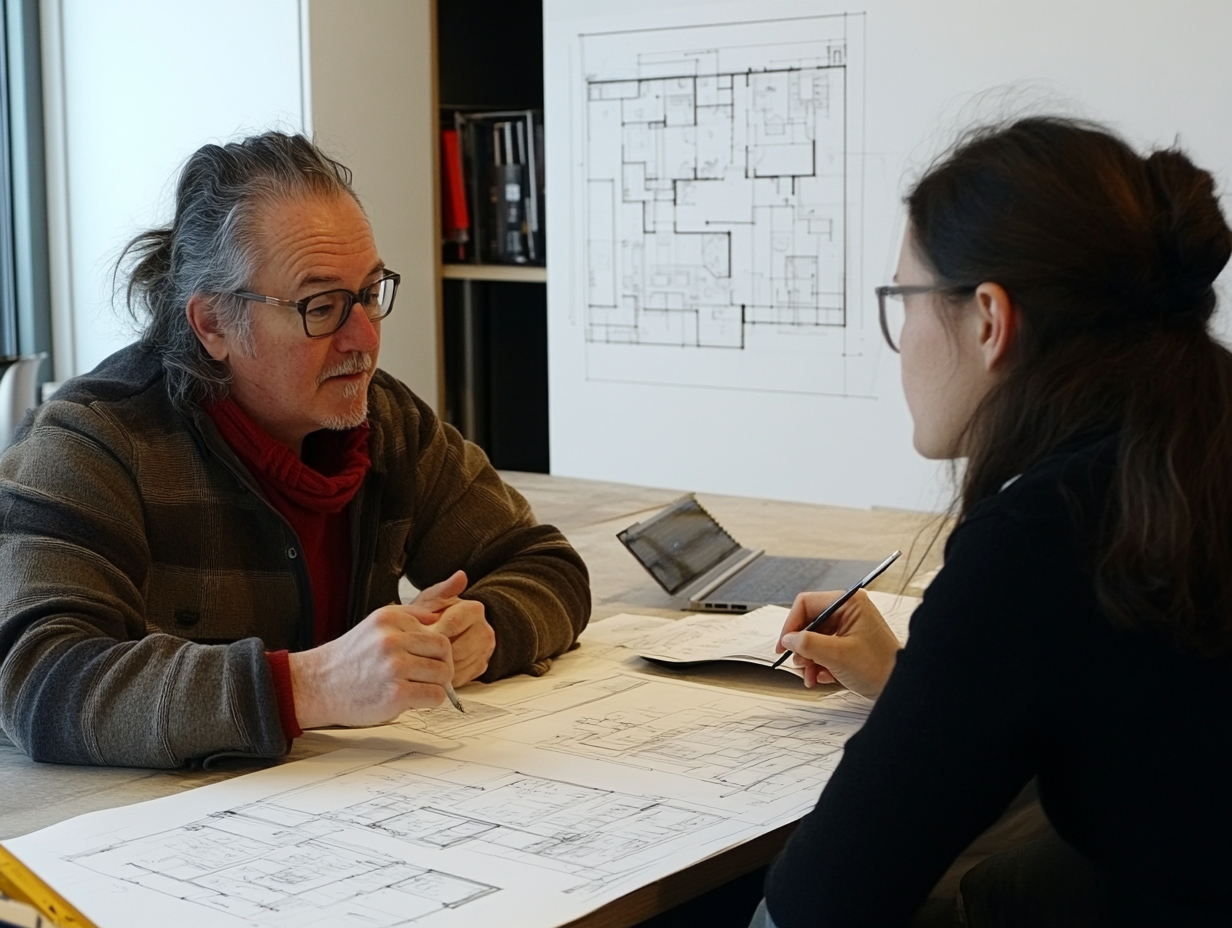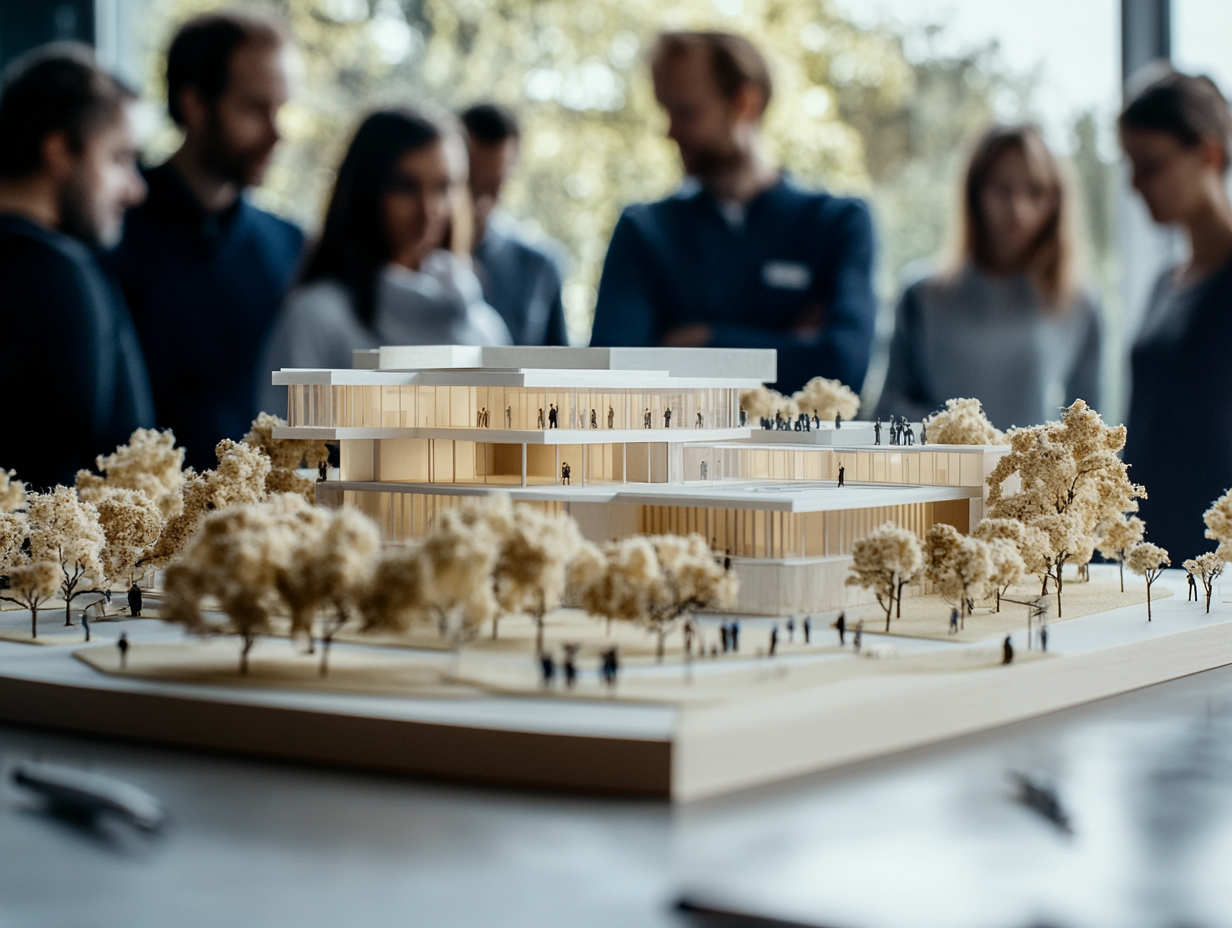Ema is a trained architect, writer and photographer who works as a Junior Architect at REX in NYC. Inspired by her global experiences, she shares captivating insights into the world’s most extraordinary cities and buildings and provides travel tips on her blog, The Travel Album.
In architecture, the client-architect relationship is the cornerstone of meaningful design. At its best, this relationship allows architecture to transcend mere function and aesthetics, producing spaces that reflect the unique identity, desires and aspirations of the people who use them. While technical expertise and creative vision are essential, understanding the client on a deeper level transforms a project from a standard commission into a personal and powerful architectural statement. The client-architect relationship is pivotal, and architects should master the art of understanding their clients – how empathy, communication and collaboration shape exceptional design outcomes.
The Client as a Co-Creator in the Design Process

Image generated by Architizer via Midjourney
In contemporary architectural practice, clients are not just patrons funding a project; they are co-creators whose involvement enriches the design process. Their needs, preferences and personal stories are invaluable inputs and an architect’s task is to not merely interpret a brief but to uncover layers of meaning behind the client’s words — often translating abstract desires into tangible spaces. Understanding a client’s lifestyle, cultural background and future aspirations provides a design foundation that is as functional as it is emotionally resonant.
Architect Louis Kahn once said, “A building is like a child; it needs a mother.” In this analogy, the architect provides form and structure, but the client nurtures the intent, making the design process a truly collaborative journey.
Building Empathy: Listening Beyond the Brief
One of the most critical skills for an architect is the ability to listen. While initial client meetings typically revolve around practical requirements — budget, square footage, materials — successful projects are born from architects’ ability to read between the lines. Active listening reveals insights beyond what is explicitly stated, capturing unarticulated preferences and emotional responses. For example, a client might request “open, airy spaces,” but what they may truly be seeking is a sense of freedom or tranquility. An architect’s role involves probing deeper with thoughtful questions and interpreting these desires into design elements like spatial openness, natural light or material warmth.
Case Study: Alvar Aalto’s Paimio Sanatorium – A Client-Centered Approach
Alvar Aalto’s Paimio Sanatorium is an excellent example of architecture designed with an extraordinary understanding of its users. Built for tuberculosis patients in the 1930s, Aalto tailored every detail to their comfort and healing. The building’s orientation maximizes sunlight and fresh air circulation, while specially designed chairs allow patients to breathe more easily. This project exemplifies how thoughtful design, rooted in empathy for end users, can profoundly impact the lives of its occupants.
Striking the Balance: Vision vs. Client Expectations
One of the greatest challenges architects face is balancing their creative vision with client expectations. You’ll frequently work with an architect who becomes highly frustrated when a client’s vision doesn’t align with their own professional judgment on what’s best. While clients seek innovative design, they may also hold preconceived notions that constrain the architect’s freedom. The best way to navigate this tension is usually by guiding clients through a design process that educates, inspires and reassures. Tools such as mood boards, sketches, physical models, past project precedents or virtual reality walkthroughs can bridge the gap between the architect’s vision and the client’s imagination.
I could imagine that an architect like Zaha Hadid’s, with her bold, futuristic designs likely initially encounter resistance. but her ability to convey her vision through models and presentations gradually won clients over. The resulting projects became icons of architectural innovation, demonstrating how strong client relationships can unlock daring design. Naturally, designs don’t have to be overly complex or bold to encounter skeptical or resistant clients — I’ve experienced this even with the simplest concepts. Each project is unique, and every client has distinct expectations and preferences.
Communication: The Key to Trust and Collaboration
Clear and consistent communication is essential throughout the architectural process. Initial meetings set the tone for trust and regular updates ensure transparency, preventing misunderstandings and delays. Architects who involve clients at every step — whether through informal check-ins or collaborative workshops — build confidence and foster a sense of shared ownership over the final design. Design charrettes are a particularly effective way of involving clients in the creative process (I believe this approach should be implemented more frequently). These collaborative sessions could invite clients to participate in brainstorming and problem-solving alongside the architect, enhancing the design with diverse perspectives. While this doesn’t always happen, the design process typically involves architects developing and presenting multiple design iterations, allowing the client to review and gradually gravitate toward one option over the others.
Collaborating closely with the client and consistently understanding their vision and preferences helps guide the design as it evolves. Sometimes, clients’ needs can evolve over the course of a project (this is acceptable within reason and depending on the project’s stage of development), and architects must remain agile enough to adapt without compromising design integrity. A successful architect-client relationship requires a flexible mindset, where changes are seen not as disruptions but as opportunities for refinement.
The Long-Term Impact: Architecture as a Personal Legacy
Buildings are more than just physical structures; they often become integral to both the client’s and the architect’s legacy. A private home designed for a client can encapsulate deeply personal stories, reflecting intimate memories and individual lifestyles, while a business or institutional building embodies brand values, mission, or even the aspirations of a broader community. Each space is a carefully crafted environment that goes beyond mere function; it becomes a vessel for identity, a place where stories unfold. A well-designed space resonates emotionally with its users, influencing their experience and interactions, while standing as a lasting testament to the architect’s creative expertise and the client’s vision.
Consider one of my favorite examples, the Fallingwater house by Frank Lloyd Wright, where the Kaufmann family’s desire for a retreat immersed in nature resulted in one of the most iconic homes in modern architecture. Wright’s understanding of his client’s deep connection with the landscape enabled him to create a masterpiece that continues to inspire generations of architects and nature lovers alike.
Designing for People, Not Just Spaces

Image generated by Architizer via Midjourney
At its heart, architecture is about designing for people. Buildings may be celebrated for their beauty or technical brilliance, but the most enduring designs are those that respond thoughtfully to the needs and aspirations of their users. The art of understanding clients is not a soft skill — it is a fundamental part of architectural practice, requiring empathy, active listening and the ability to translate human desires into built form.
Ultimately, architecture is a dialogue between the architect’s vision and the client’s identity. By embracing this relationship as a collaborative partnership, architects can create spaces that are not only functional and beautiful but also meaningful and deeply personal. Designing with purpose means designing with people in mind, ensuring that every project, no matter the scale, is a reflection of both the architect’s creativity and the client’s story.
Architects: Want to have your project featured? Showcase your work through Architizer and sign up for our inspirational newsletters.

